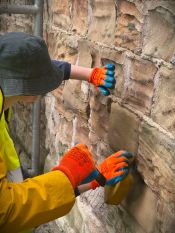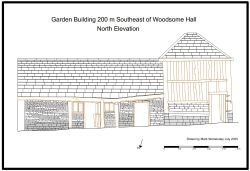Womersleys are assisting the Consultancy for Conservation and Development in the progression of works at the principal Yazidi Temple at Lalish, Iraq. Work is progressing in the main hall to remove modern stone facings applied in Saddam Hussain’s time to allow the temple to be repaired and re-plastered in a feebly hydraulic lime.
There is an image of the temple from 1922 that we are using to help guide the restoration and after the initial modern facings have been removed, the modern shuttered backing material will also be removed carefully to see if we can identify original niches, string courses etc
Work at the temple requires great sensitivity and respect for this precious Yazidi shrine. Work uses full PPE but no shoes or boots are allowed in this holy place.
The temple is built around the sanctuary of Shaykh Adï (ob. 1162), and is the only monumental complex of the Yezidis, 35 kilometres north of Mosul, in Iraqi Kurdistan. Although it has been suggested that it was converted from a Christian monastery, Arabic sources and architectural analysis indicate that it may originally have been the zäwiya where Shaykh Adï and his disciples retired to meditate. After his death, the sanctuary grew up around his tomb and became a centre of pilgrimage. It is a large complex containing buildings of different sizes and functions. It was not conceived as a centrally planned structure and its different parts were added progressively as and when circumstances dictated. The shrine of Shaykh Adï, thought to be the earliest structure on the site, is a square tomb topped by a steeply pitched conical parasol dome. The south elevation, which now forms the north wall of the main hall, is of finely jointed limestone ashlar, constructed of blocks approx. 48 cm. on the bed.
This tomb likely to originally have been an isolated structure built against a small cliff face, to which additions were made to the east, west and south in following periods. An article by Birgül Açikyildiz suggests that the architectural style is derived from twelfth- / thirteenth-century Shiite buildings of Mosul in a style which has been continued by the Yezidis until the present day, but the relationship of such buildings to Seljuk and Armenian architecture and their relationship to the pre-Islamic architecture of Iran deserves further study.
A survey of the Lalish complex was undertaken in 1910 by Walter Bachmann and more recently by the “Master Plan Lalish” (2011). The present project concerns the main hall constructed on the front (southern) side of the tomb of Shaykh Adï and three oil halls which extend westwards from Shaykh Adï’s tomb.





